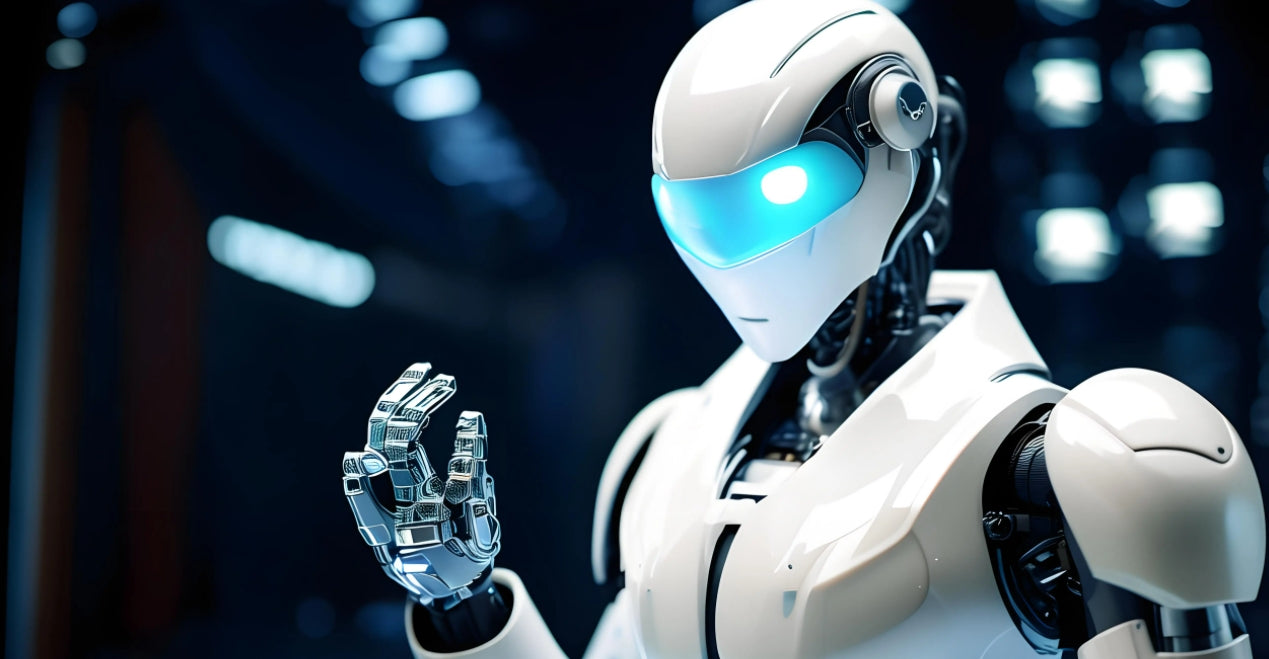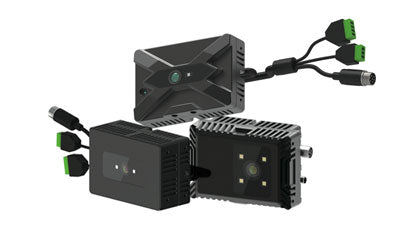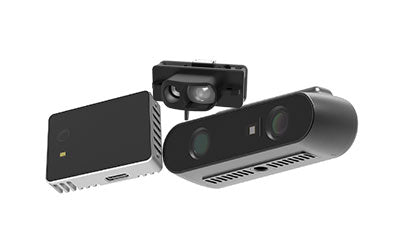TOF Principles to SLAM Applications: Future Trends in Perception

With the rapid development of artificial intelligence, robots are becoming increasingly widespread across various industries. As one of the core components of robotics, perception systems have become a focal point for technological innovation. In recent years, the integration of Time-of-Flight (TOF) cameras and SLAM (Simultaneous Localization and Mapping) technology has endowed robots with unprecedented spatial awareness capabilities.
This combination not only enhances localization accuracy and mapping efficiency but also opens up new possibilities for autonomous navigation and intelligent environmental interaction. This article will comprehensively analyze the working principles of TOF cameras, the implementation mechanisms of SLAM technology, and the latest application trends and technological breakthroughs of their integration in robotic perception systems.
What is a TOF (Time of Flight) Sensor?
A TOF camera works by emitting an infrared light signal and measuring the time it takes for the signal to return after being reflected by objects, thus calculating the distance from the camera and generating high-precision 3D depth images. Compared to traditional stereo vision or structured light methods, TOF offers advantages such as high speed, high accuracy, small size, and low power consumption. It can work stably under various complex lighting conditions. The core technologies include modulated light sources, time-of-flight sensors, and depth image processing algorithms. Currently, it is widely used in applications such as facial recognition, motion capture, industrial inspection, and autonomous navigation.
Introduction to SLAM (Simultaneous Localization and Mapping)
SLAM is a key technology for enabling robots to navigate autonomously in unknown environments. It allows a robot to create a map of its surroundings in real time without prior knowledge of the area while simultaneously estimating its position within that map. Traditional SLAM systems often rely on LiDAR or visual sensors. With advancements in computing power and growing perception demands, more SLAM systems are incorporating 3D depth data to enhance robustness. Due to its real-time depth data output, the TOF camera has become one of the key sensors supporting the upgrade of SLAM systems.
The Technological Advantages of Integrating TOF with SLAM: Building the Next Generation of Intelligent Perception Systems
As the demand for robots to have advanced environmental cognition increases, the deep integration of Time-of-Flight (TOF) cameras with SLAM (Simultaneous Localization and Mapping) technology is gradually becoming a driving force behind the development of intelligent robots. Below, we will explore the multiple advantages and application prospects brought by the combination of these technologies.
1. High-Precision 3D Mapping Capabilities
TOF cameras use light pulses and measure their reflection time to accurately capture the 3D structure of a scene. Unlike traditional visual SLAM that relies solely on image feature matching, the sub-centimeter depth data provided by TOF significantly enhances the spatial accuracy and detail of maps. Robots can more accurately recognize walls, obstacles, furniture edges, and other complex structures, providing more reliable environmental models for subsequent path planning and decision-making.
2. Adaptability to Complex Lighting Conditions
The active light source design of TOF cameras enables them to operate stably in extreme lighting conditions. For example, in underground parking lots, at night, or in environments with smoke or dust, traditional visual SLAM systems often fail due to image blur or insufficient exposure. In contrast, TOF cameras can continuously output high-quality depth data. This adaptability greatly expands the deployment boundaries of SLAM systems, making them suitable for more industrial, security, and outdoor applications.
3. Multi-Sensor Fusion to Reduce Drift Errors
A common problem in SLAM systems is cumulative error. This issue can be effectively alleviated through the fusion of TOF data with other sensor data, such as IMUs (Inertial Measurement Units), RGB cameras, and LiDAR. The stable depth reference provided by TOF can be used to correct visual drift in real time, improving the overall localization accuracy and map consistency, particularly in dynamic environments or areas with sparse texture.
4. Real-Time Performance and Embedded Platform Compatibility
TOF cameras offer high frame rates and low-latency data output, enabling efficient operation even on embedded or edge computing platforms. Unlike traditional visual systems that require complex image processing and stereo matching, TOF cameras directly output depth maps that drive the core SLAM modules. This is particularly advantageous for service robots, AGVs (Automated Guided Vehicles), and other mobile platforms that require sensitive perception inputs for high-speed motion or dynamic obstacle avoidance.
5. Expansion of Intelligent Perception Functions
SLAM systems enhanced with TOF cameras not only perform localization and mapping but also enable higher-level intelligent functions such as object recognition, segmentation, and human-robot interaction. For example, robots can sense human motion through depth data for automatic avoidance, or model shelf structures for precise item picking. This capability marks a key step in moving robots from "seeing" the environment to "understanding" it.
6. Wide-Ranging Application Scenarios: From Indoor Service to Industrial Inspection
The powerful perception abilities of TOF+SLAM integration make it applicable in various industries and scenarios, especially those that require high spatial precision, environmental adaptability, and real-time processing capabilities. Here are some representative application scenarios:
-
Indoor Service Robots
Such as cleaning robots, smart concierge robots, and companion robots. By integrating TOF and SLAM, robots can build high-precision indoor maps for automatic path planning, obstacle avoidance, and area recognition. The real-time depth sensing capabilities of TOF compensate for the shortcomings of pure vision solutions in low-light environments, allowing robots to navigate and localize accurately even in dark or low-light rooms, significantly enhancing user experience and scene adaptability. -
Warehouse and Logistics Robots
In modern smart warehouses and industrial logistics systems, AGVs (Automated Guided Vehicles) and AMRs (Autonomous Mobile Robots) rely on stable SLAM systems for navigation, localization, and path optimization. TOF sensors can detect the 3D structure of shelves, aisles, and workstations in real time, helping robots avoid dynamic obstacles, approach target points accurately, and support dynamic path re-planning in complex environments, improving overall logistics efficiency and operational safety. -
Smart Security and Industrial Inspection Robots
In hazardous or hard-to-reach environments, such as substations, chemical plants, or tunnels, inspection robots equipped with TOF cameras can use SLAM to build real-time maps and adapt their paths autonomously. Even in darkness, smoke, or high-temperature conditions, TOF cameras can provide stable depth data, ensuring that robots can successfully perform automated inspection, data collection, and anomaly detection tasks, reducing labor costs and improving operational safety. -
Autonomous Driving and Small UAV Platforms
In low-speed or confined environments, such as campus logistics vehicles, factory transporters, or indoor delivery robots, TOF+SLAM technology can enable precise close-range obstacle avoidance, lane keeping, and path tracking. The active ranging mechanism of TOF is ideal for detecting nearby human-like objects, ground variations, and dead corners, enhancing system response capabilities in dynamic environments and making it a vital technology for lightweight autonomous driving systems. -
AR/VR Spatial Perception Devices
More AR headsets and VR devices are now incorporating TOF as a depth perception solution to assist SLAM with spatial localization and user interaction. For example, TOF helps construct indoor geometric models, enabling virtual objects to be precisely overlaid and interact within the real world, laying the foundation for immersive experiences with more accurate spatial perception. -
Educational and Research Platforms
In university labs and robotics competitions, TOF+SLAM systems are used as teaching and development tools, providing researchers with visual, controllable, and easily integrable perception solutions. These systems support multi-robot collaborative localization and environment mapping algorithm research, accelerating the development of new intelligent systems.
7. Future Trends and Outlook
As the cost of TOF chips continues to decrease, power consumption is optimized, and AI processing capabilities keep improving, the combination of TOF and SLAM will be widely applied in more robotic fields. In particular, this technological path will become a core component for building all-scenario perception capabilities in areas such as digital twin spaces, smart factories in Industry 4.0, and mobile perception nodes in smart cities.
7. The Future of Robotic Perception Systems: Moving Toward a New Era of Integrated Intelligence and Edge Computing
With continuous technological advancements and market demands, robotic perception systems are rapidly evolving toward higher precision, greater intelligence, and stronger adaptability. The integration of TOF cameras and SLAM systems not only provides a stable and reliable perception solution for current robots but also indicates the core trends in the future of robotic perception technology:
1. TOF Hardware Miniaturization and Cost Optimization Driving Mass Adoption
In recent years, TOF camera manufacturing processes have continuously improved, with significant reductions in size, lower power consumption, and increased chip-level integration, making them more suitable for lightweight robots and mobile devices. As production costs continue to decline, TOF cameras are gradually entering the consumer-grade market, and they are expected to become standard perception modules for service robots, delivery robots, and other devices.
2. Multi-Sensor Fusion Becoming the Mainstream Trend
Single sensors struggle to meet the full range of requirements in complex environments. Therefore, future robots will generally adopt multi-sensor fusion solutions. TOF cameras will work in conjunction with RGB cameras, IMUs, LiDAR, and ultrasonic sensors to complement data from vision, depth, and motion dimensions. This integrated perception architecture will enhance system robustness and environmental adaptability, ensuring stable navigation in extreme conditions such as bright light, darkness, reflections, and fog.
3. SLAM Systems Moving Toward Edge Deployment
With the significant improvement in mobile edge computing capabilities, more and more SLAM systems will be deployed on robots' edge hardware rather than relying on cloud computing. This model offers low latency, high security, and offline functionality advantages, especially for applications that require real-time responses, such as industrial manufacturing, warehouse logistics, and rescue robots. Edge devices can integrate AI chips to perform tasks such as image understanding, scene semantic recognition, and obstacle prediction, accelerating robots' dynamic response to the environment.
4. TOF+SLAM+AI Accelerating Autonomous Decision-Making
Future robotic perception systems will not only 'see clearly' but also 'understand' and 'make accurate judgments.' With the assistance of AI algorithms, TOF+SLAM systems will evolve from perception to cognition and decision-making layers. By deeply understanding 3D maps, robots will be able to perform higher-level behavior planning and task scheduling, achieving complex path reasoning, target dynamic tracking, and anomaly event judgment.
5. Multi-Industry Deep Integration Driving Robotic Intelligence
-
Service and Companion Robots: In home and healthcare scenarios, TOF+SLAM enables robots to perform safe obstacle avoidance, face recognition, and spatial memory, enhancing human-robot interaction.
-
Smart Manufacturing and Flexible Production Lines: Industrial robots use high-precision maps to coordinate with other equipment, recognize workstations, and facilitate flexible scheduling, accelerating the deployment of intelligent production lines.
-
Unmanned Logistics Systems: Delivery robots and unmanned forklifts rely on TOF to build real-time traffic models, responding to dynamic cargo flows and complex paths.
-
Smart Healthcare and Rehabilitation Assistance: Integrating TOF sensing with SLAM navigation, robots can support solutions such as hospital navigation, intelligent medication delivery, and caregiving, contributing to the development of smart hospitals.
Conclusion
From the fundamental principles of TOF to the real-time mapping capabilities of SLAM, their integration marks a new phase in robotic perception systems. This is not just a result of technological convergence but a key step in the smart progression of robotics. With continuous advancements in software and hardware, optimized algorithms, and iterative improvements, robots will achieve truly autonomous perception and intelligent interaction in more complex dynamic environments. TOF and SLAM are building the foundational infrastructure for the next generation of robotic perception, injecting continuous momentum into artificial intelligence and automation industries.
Synexens 3D Of RGBD ToF Depth Sensor_CS30
Our professional technical team specializing in 3D camera ranging is ready to assist you at any time. Whether you encounter any issues with your TOF camera after purchase or need clarification on TOF technology, feel free to contact us anytime. We are committed to providing high-quality technical after-sales service and user experience, ensuring your peace of mind in both shopping and using our products.





